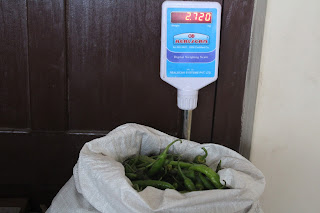The head principal, Khenchen Samdrup of Dzongsar Khyentse Chokyi Lodro Institute (DKCLI), Chauntra, Himachal Pradesh, in India visited Chokyi Gyatso Institute (CGI), Dewathang from October 24th – 28th, 2017 to observe and study the implementation of Lhomon Education (LME) - program content and approach - how classroom materials are designed, developed, and delivered.
We invited Khenchen to LME class and requested him to give advice for LME students and teachers about the importance of education. It was indeed insightful for teachers and students to listen to his precious advice. Following are excerpts from Khenchen’s talk.
 |
| Khenchen Samdrup and Khenchen Sonam Tashi |
You living in Bhutan are Mahayana and Vajrayana followers. In essence, it means that our concerns and deeds must be for the benefit of all sentient beings and their liberation ultimately. That is why we have the basic responsibility to help and benefit others. We should be able to help our small communities, the whole village, the entire nation, and the world at large. Even if we cannot help others, we should not harm at the least. Therefore, education has a very important role to inculcate the habit of helping and benefiting others.
 |
| Khenchen talking to students and teachers |
For example, a bird has two wings, so that they can fly high. For us humans, one of two wings is an education, and the other one is a right attitude. Education by itself does not make a good person. We need the right attitude. The right attitude with the support of education enables us to help others. It is obvious that the high qualification alone of a person cannot benefit others without the foundation of right attitude.
There is a saying that, a stupid person can make a mistake of an inch, but an educated person can make a mistake of a meter. What it means is that an educated person with the wrong attitude can destroy the whole community and society, while a stupid person with the wrong attitude can destroy only a small family or a small community. Therefore, right education that fosters kindness, compassion, right intention, and the right attitude are necessary to be able to help and benefit others and self.
 |
| Khenchen, LME teachers, and students |
Whether it be spiritual or secular education, the focus should be to make a person decent, good human being, so that, he or she not only help one-self but others in his or her immediate communities, the nation, and eventually the whole world.
We have His Holiness Dzongsar Khyentse Rinpoche, a great leader and a master, whose activities are for the benefit of all beings all over the world. We have to cherish his profound activities and follow his footsteps.
 |
| Lopon Tshering, translating Khenchen's talk t |
Now, you are fortunate to study under LME that believes in educating a person to be good, decent human being. I advise you not to waste your time, energy, and this great opportunity. Take this opportunity seriously, so that you will accomplish the goodwill and wisdom which will benefit not only for yourself but the rest, whom you will have the influence on. And also that you will cherish
about yourself when you grow old and not regret.











































